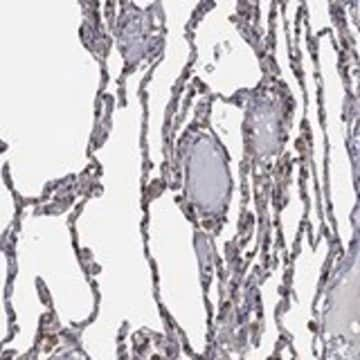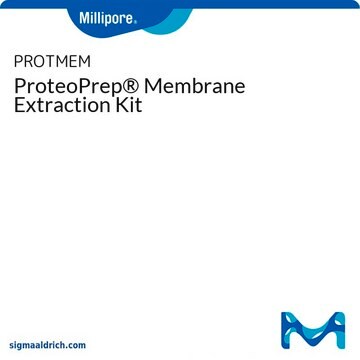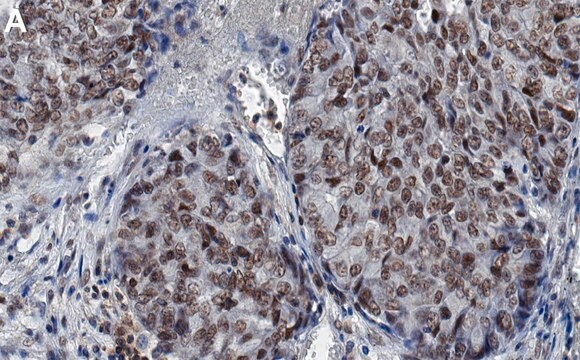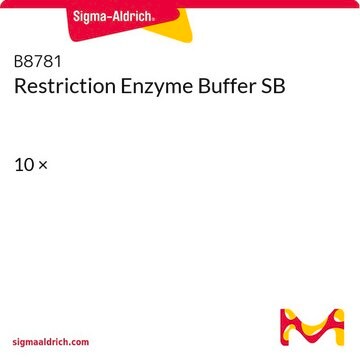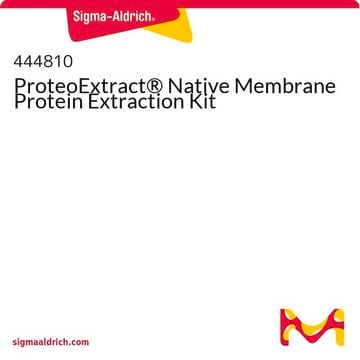MABD85
Anti-LIMD1 Antibody, clone 3F2/C6
clone 3F2/C6, from mouse
Sinónimos:
LIM domain-containing protein 1
Seleccione un Tamaño
461,00 €
Seleccione un Tamaño
About This Item
461,00 €
Productos recomendados
origen biológico
mouse
Nivel de calidad
forma del anticuerpo
purified immunoglobulin
tipo de anticuerpo
primary antibodies
clon
3F2/C6, monoclonal
reactividad de especies
human
técnicas
immunocytochemistry: suitable
immunohistochemistry: suitable
immunoprecipitation (IP): suitable
western blot: suitable
isotipo
IgG1κ
Nº de acceso NCBI
Nº de acceso UniProt
Condiciones de envío
wet ice
modificación del objetivo postraduccional
unmodified
Información sobre el gen
human ... LIMD1(8994)
Descripción general
Especificidad
Inmunógeno
Aplicación
Apoptosis & Cancer
Stem Cell Research
Oncoproteins
Oxidative Stress
This antibody has been shown to work in Immunohistochemical applications (Sharp, T., et al. (2008).
This antibody has been shown to work in Immunoprecipitation applications (Courtesy of Dr. Tyson Sharp, Cancer Research, UK)
Calidad
Western Blot Analysis: A 1:2000 dilution of this antibody detected LIMD1 in H1299 cell lysates.
Descripción de destino
Forma física
Almacenamiento y estabilidad
Nota de análisis
H1299 cell lysates.
Otras notas
Cláusula de descargo de responsabilidad
¿No encuentra el producto adecuado?
Pruebe nuestro Herramienta de selección de productos.
Código de clase de almacenamiento
12 - Non Combustible Liquids
Clase de riesgo para el agua (WGK)
WGK 1
Punto de inflamabilidad (°F)
Not applicable
Punto de inflamabilidad (°C)
Not applicable
Certificados de análisis (COA)
Busque Certificados de análisis (COA) introduciendo el número de lote del producto. Los números de lote se encuentran en la etiqueta del producto después de las palabras «Lot» o «Batch»
¿Ya tiene este producto?
Encuentre la documentación para los productos que ha comprado recientemente en la Biblioteca de documentos.
Filtros activos
Nuestro equipo de científicos tiene experiencia en todas las áreas de investigación: Ciencias de la vida, Ciencia de los materiales, Síntesis química, Cromatografía, Analítica y muchas otras.
Póngase en contacto con el Servicio técnico
